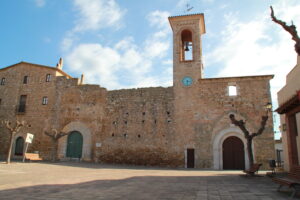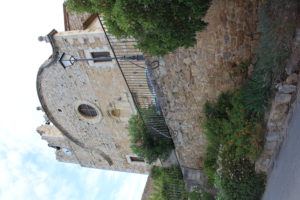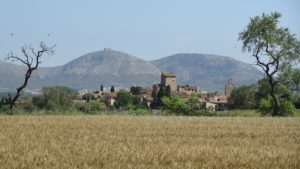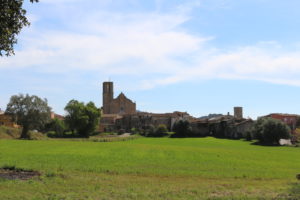Rupià
-
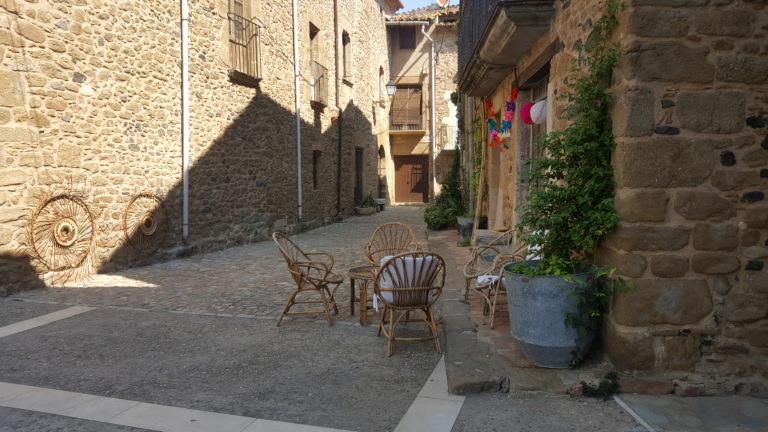
The Generalitat of Catalonia granted the municipality of Rupià the declaration of Historico-Artistic Complex for a series of elements that make this village a fascinating place to visit. It has a population of around 272 inhabitants.
For many centuries Rupià came under the aegis of the bishopric of Girona, and the presence of the mitre and its officials is recalled by the castle, in Gothic civil style, with a rectangular floor plan and built of ashlars (14th-15th C.), and also by the names of some of the town’s streets and squares.
Also visible are the remains of the 15th-century walls encircling the nucleus of the municipality, which maintains its medieval urban layout. The gateways known as Portal d’Amunt and Portal d’Avall still recall today the system of defences that protected the town, being the only entrances to it.
The visit to Rupià can be completed with a brief tour of its surroundings. Mas Llorà, situated one kilometre from the town in the area known as Brancós, is a large 18th-century mansion that conserves elements from the 16th century. In a field close to Mas Llorà stands the Olivera Grossa del Mas Llorà, a centuries-old olive tree of exceptional proportions which was once evoked in writing by Josep Pla, who called it a “prodigious olive tree.” In the summer of 1987, a fire reduced it to just the base of its majestic trunk. It is believed to be one of the largest specimens of olive tree in the Mediterranean world. Around the tree itself there are remains of a settlement from the Roman period.
-
Dades de contacte:
Ajuntament de Rupià
Plaça d’Avall, 1
17131 Rupià
T. +34 972 76 92 74
COMPARTEIX A LES XARXES SOCIALS:





